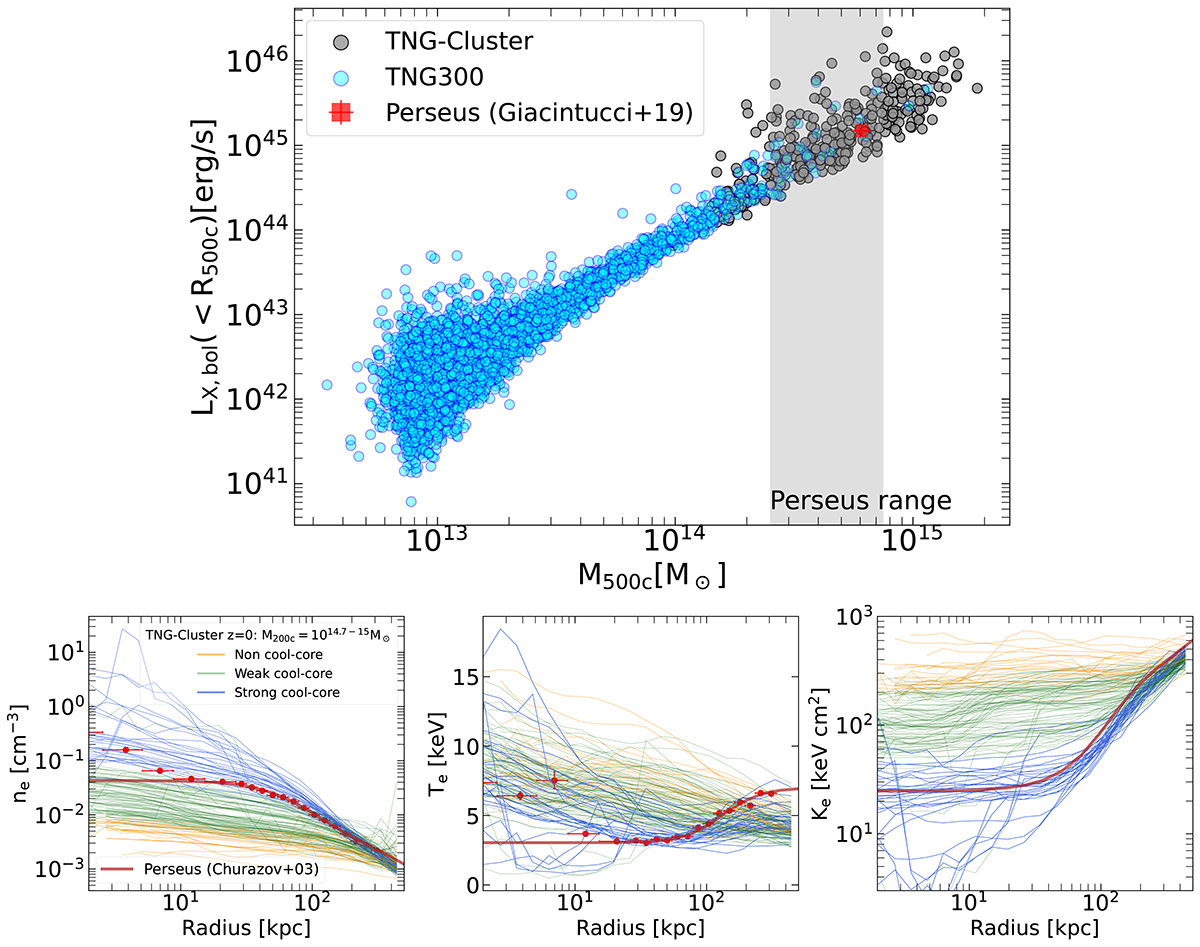Fig. 1.

Download original image
Selection and properties of Perseus-like clusters from the TNG-Cluster simulation suite. Top: distribution of clusters in the LX − M500c plane at z = 0, from TNG-Cluster (grey) and TNG300 (blue), in comparison with the Chandra observed data of Perseus from Giacintucci et al. (2019). In the Perseus mass range, M200c = 1014.7 − 15.0 M⊙ (or M500c = 1014.4 − 14.87 M⊙), there are 135 TNG-Cluster halos. Bottom: intrinsic thermodynamical profiles of the selected clusters within the Perseus mass range in comparison – i.e. at face value, without replicating the observational measurements – with the XMM-Newton observed data and analytical approximations from Churazov et al. (2003; red). From left to right, we show the 3D radial profiles of electron number density, temperature, and entropy (![]() ). The selected clusters are further classified according their core status: non cool-core (orange), weak cool-core (green), and strong cool-core (blue). All profiles are computed as averages weighted by bolometric X-ray emission. In this paper, we focus on Perseus-like clusters, namely those that are strong cool cores (blue profiles, based on central cooling time) and in the Perseus mass range.
). The selected clusters are further classified according their core status: non cool-core (orange), weak cool-core (green), and strong cool-core (blue). All profiles are computed as averages weighted by bolometric X-ray emission. In this paper, we focus on Perseus-like clusters, namely those that are strong cool cores (blue profiles, based on central cooling time) and in the Perseus mass range.
Current usage metrics show cumulative count of Article Views (full-text article views including HTML views, PDF and ePub downloads, according to the available data) and Abstracts Views on Vision4Press platform.
Data correspond to usage on the plateform after 2015. The current usage metrics is available 48-96 hours after online publication and is updated daily on week days.
Initial download of the metrics may take a while.


